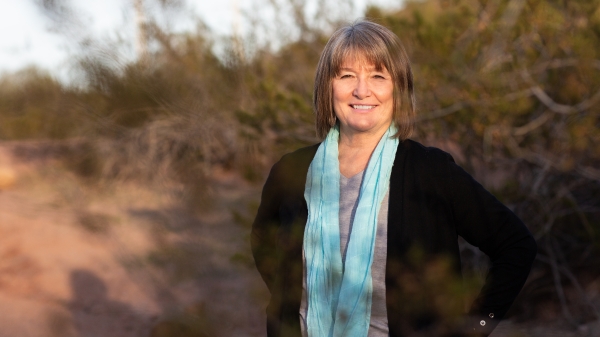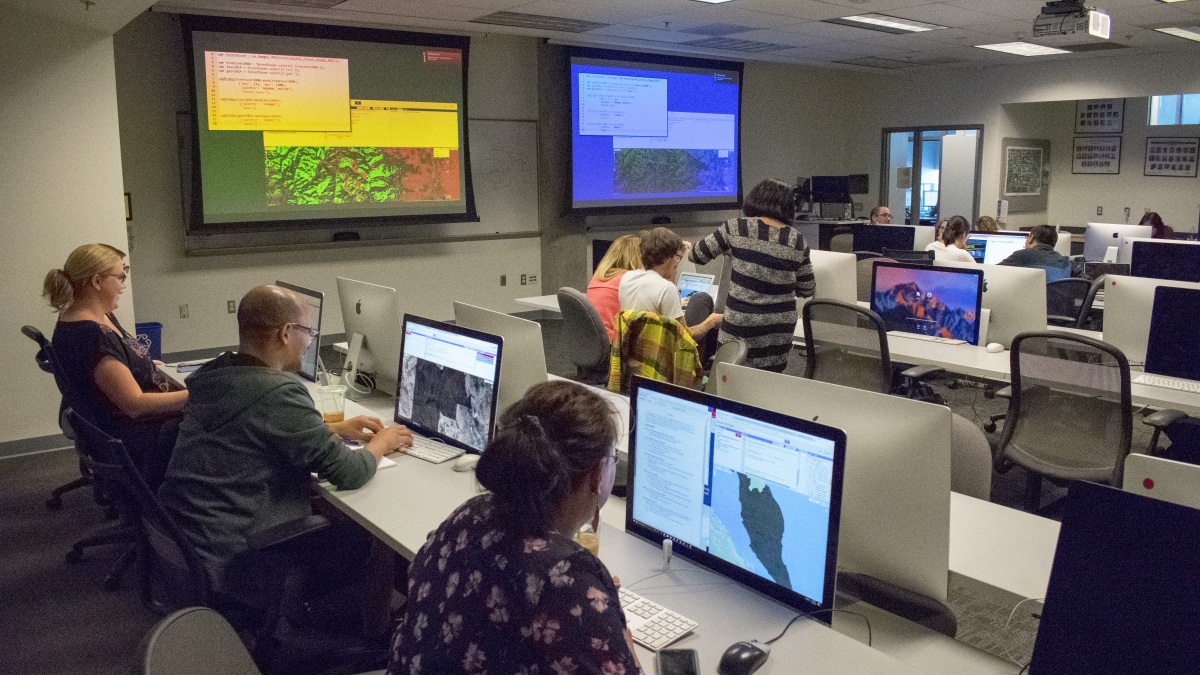Last month, the School of Geographical Sciences and Urban Planning hosted a special workshop to introduce students to Google Earth Engine and its geospatial analysis capabilities. Google Earth Engine is a cloud-computing platform that processes satellite imagery and Earth observation data — giving access to an immense catalog of data.
The workshop was presented by guest lecturer Ran Goldblatt from the University of California, San Diego. Goldblatt is a postdoctoral researcher at UCSD and member of the university’s Big Pixel Initiative — a research center focused on investigating and designing best practices in geospatial data visualization, user experience interfaces, and design techniques for scientific discovery and decision-making.
“Satellite imagery and other geospatial data are fundamental for understanding our world and for addressing many of its persistent challenges,” explained Goldblatt. “To really understand our rapidly changing world, we need access to an expanding archive of imagery and to powerful platforms that can be utilized to analyze this vast amount of data. One such platform is Google Earth Engine.”
According to Goldblatt, Google Earth Engine leverages cloud-computational services for planetary-scale analysis and consists of petabytes of geospatial and tabular data, including a full archive of Landsat scenes, as well as scenes from other satellites, together with a JavaScript- and Python-based API, and many algorithms for geospatial analysis. Beyond its technological benefits, Google Earth Engine is free for educational use, and because it runs in Google’s cloud, students do not need expensive software or powerful computers to conduct novel, impactful and data-intensive analyses in an educational context.
“Google Earth Engine is the only platform today that can be used for powerful remote sensing analysis across space and time and that is free of charge for academic use,” said Goldblatt.
Michelle Stuhlmacher, a doctoral student with the School of Geographical Sciences and Urban Planning, assisted Goldblatt with the workshop.
“I was excited to help bring more Google Earth Engine users to the university,” she said. “Google Earth Engine is such a powerful tool for satellite image processing, global-level data analysis, and many other big data applications. Knowing Google Earth Engine will allow students, post-docs and faculty at Arizona State University to ask and answer interesting research questions.”
This gained experience will also help students as they leave school and enter the workforce. Remote sensing skills are essential for today’s job market. Photogrammetry was identified by the U.S. Bureau of Labor Statistics as one of the fastest-growing occupations between 2014 and 2024.
“Remote sensing is used in almost every domain: research on global warming, mineral exploration, urban planning, agriculture management and more,” said Goldblatt. “In today’s competitive job market, GIS skills are not enough. Many workplaces now require advanced remote-sensing knowledge and experience with analysis of satellite imagery.”
As a student looking toward her future career options, Stuhlmacher has taken notice of the edge her experience with Google Earth Engine will give her.
“I think Google Earth Engine is a hard skill that makes students more employable because they are able to efficiently answer complex research questions,” she said. “Since becoming part of the Google Earth Engine user community, I have seen several job ads that include Google Earth Engine as a desired skill. As word gets out, I expect even more universities and public- or private-sector jobs including Google Earth Engine in their job ads.”
Goldblatt’s intensive weeklong workshop, based on a course developed by UCSD’s School of Global Policy and Strategy, provided ASU students with an introduction to the program and its capabilities. In an effort to help students gain and grow skills related to Google Earth Engine, the School of Geographical Sciences and Urban Planning is currently in the process of developing its own course for the Fall 2018 semester.
More University news

ASU professor named AAAS Fellow
The American Association for the Advancement of Science (AAAS), the world’s largest general scientific society and publisher of…

ASU Police Department announces new assistant chief of police, promotions
Arizona State University Police Chief Michael Thompson announced the promotion of four veteran ASU Police Department officers…

ASU student wins Truman Scholarship to pursue public service career
An Arizona State University student who has spent years in service to her Mesa, Arizona, community has been named a Truman…
